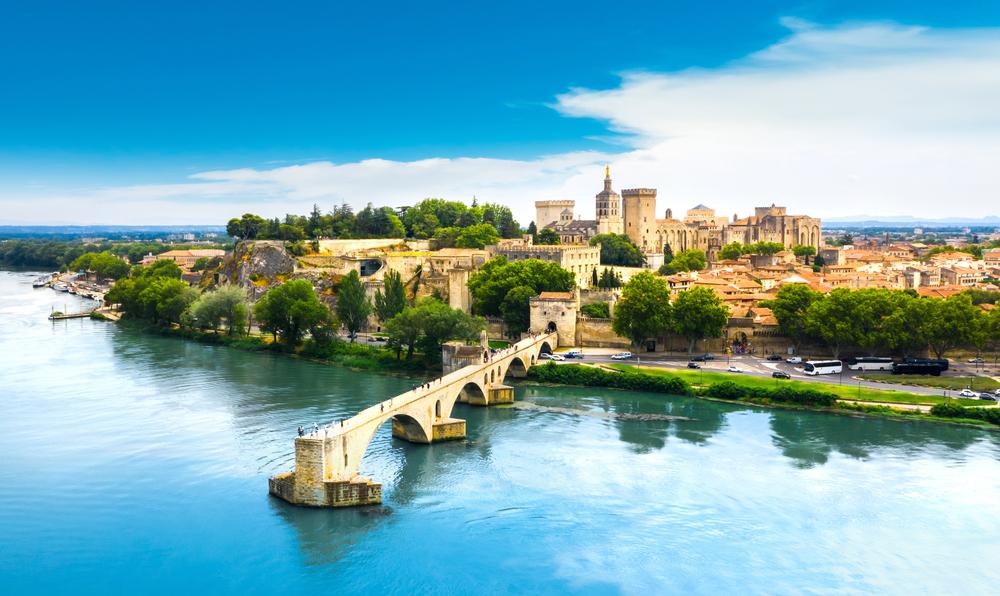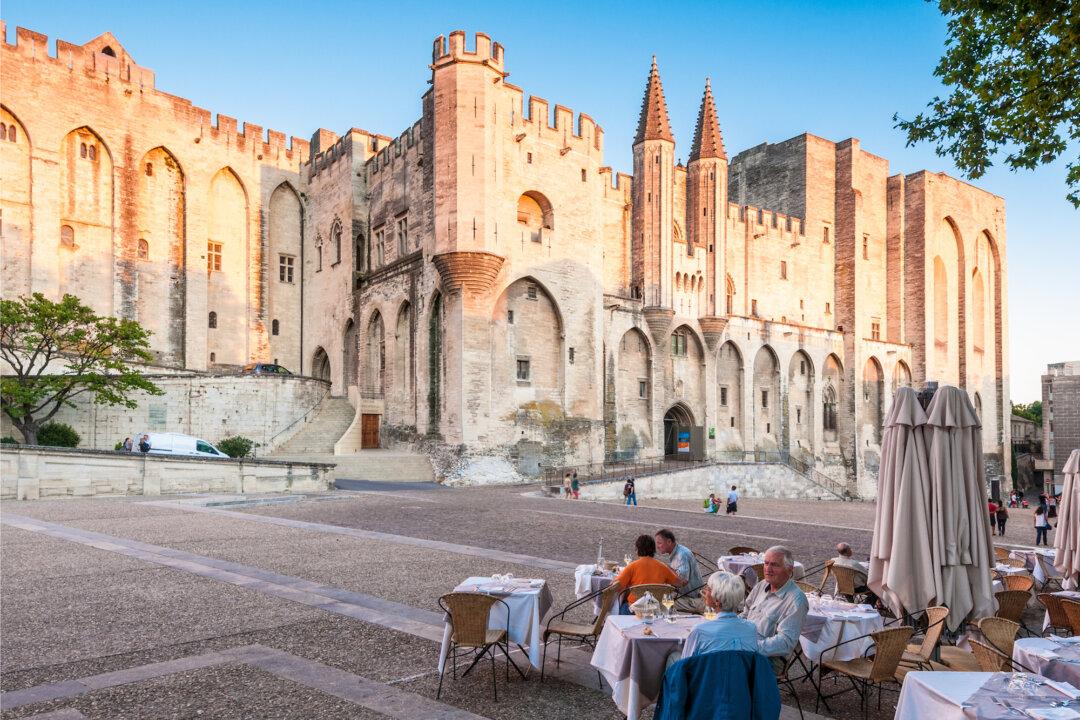Nestled into wooded hills on the broad curves of the Rhône River, Avignon is a pleasant little city that’s great for strolling down cobblestone streets enclosed by medieval walls. Today, it’s home to fewer than 100,000 people, though it was once the absolute center of the universe for a large portion of the Western world. The greatest testament to that legacy of political and religious power still stands in the heart of town.

Saint Bénézet Bridge, also known as the Pont d'Avignon. saiko3p/Shutterstock





